In the world of automobiles, affordability has often been the mother of invention. Car companies set out to build simple, budget-friendly vehicles for the masses—yet, some of these humble models defied expectations in remarkable ways.
They weren’t just about saving money; they became symbols of freedom, ingenuity, and resilience. Over time, these once-overlooked cars captured hearts, shaped pop culture, and left an indelible mark on the industry.
Their stories prove that greatness can spring from the most unassuming origins, reshaping how we see “cheap” cars forever.
The wedge-shaped cars of the 1960s-1980s are so dramatic and angular that it seems as if there were no compromises made in the transition from initial sketch to production. Unfortunately, they’re so old now that you rarely see any of them out on the street unless you count the C4 Chevrolet Corvette. The good news is that the Petersen Automotive Museum in LA will be opening an exhibit called “The Wedge Revolution: Cars on the Cutting Edge” on August 2.
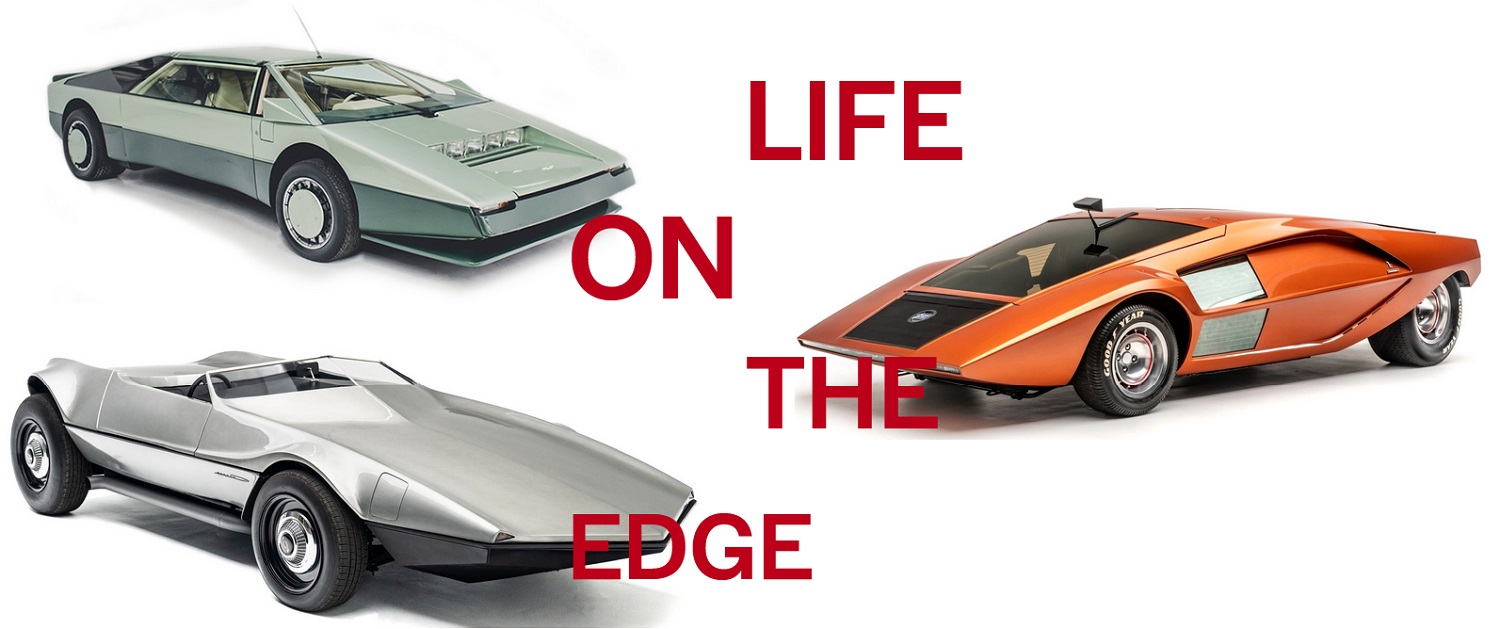
According to the museum, the display, “co-curated with Tesla Chief Designer and wedge design aficionado Franz von Holzhausen, will showcase a wide range of vehicles embodying the bold, angular styling that defined this unique era in automotive design. It will highlight the transitional period when designers moved from decorative curves and chrome to clean lines, flat surfaces and geometric forms.”
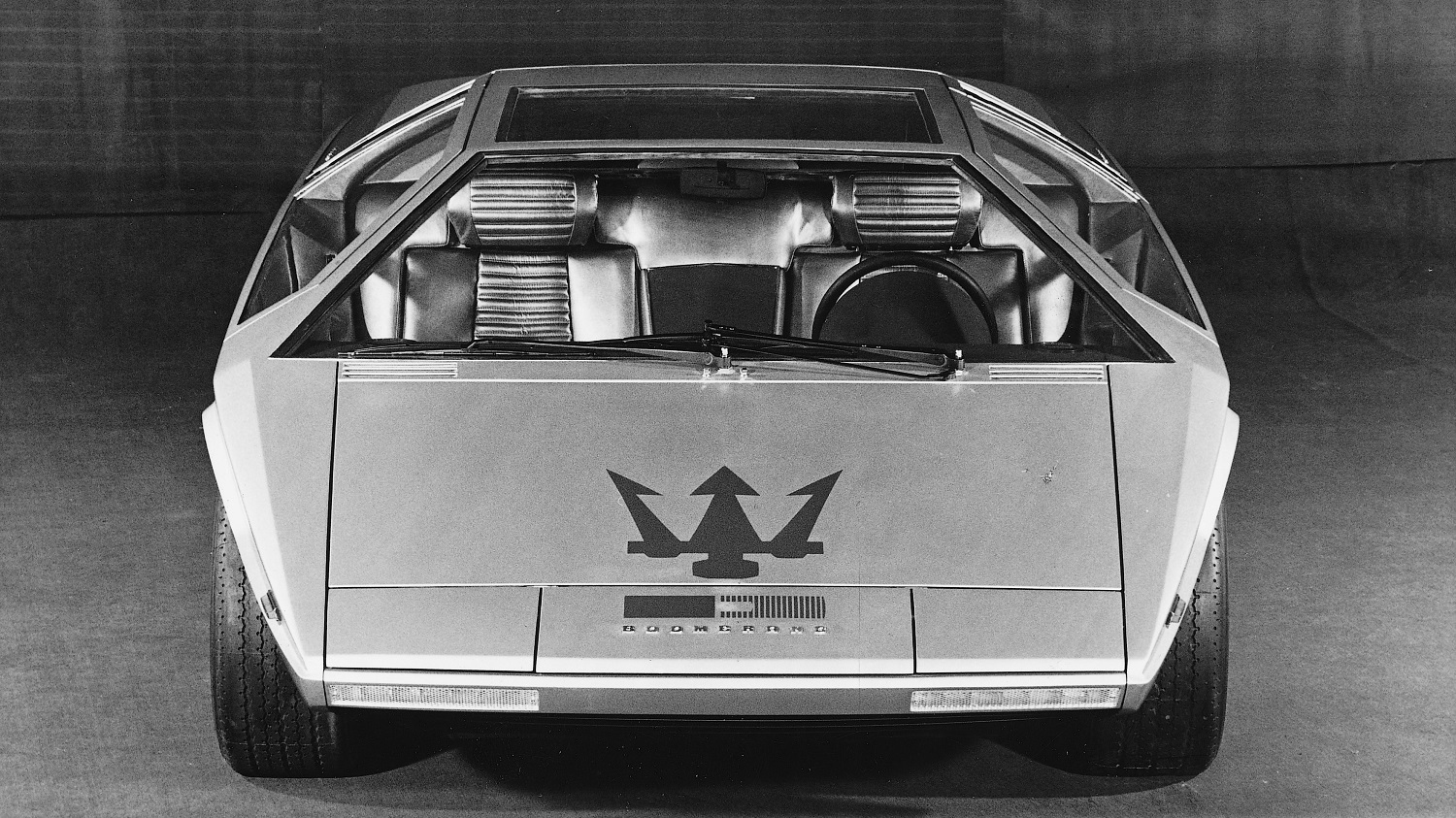
Work from designers such as Marcello Gandini, Sergio Coggiola, William Towns, and Jerry Palmer will be showcased there. Some of the concept and production cars include the 1966 Cannara I, 1970 Lancia Stratos HF Zero, 1974 Lamborghini Countach LP400 “Periscopio,” 1979 Aston Martin Bulldog, and 1976 Chevrolet Aerovette. Although not from the era, the Tesla Cybertruck and the Lo Res Car from the footwear brand United Nude will also be on-site to check out. Given the designers mentioned, it wouldn’t come as a surprise if the exhibit also includes the Maserati Boomerang or an Aston Martin Lagonda sedan.

For more information about the “The Wedge Revolution: Cars on the Cutting Edge” exhibit at the Petersen Automotive Museum, click here. If you can’t get to Los Angeles anytime soon, don’t worry—the exhibit runs through September 2026.
The Beach Boys have a success story worth sharing. They have sold over 100 million records worldwide, and over the course of their career—which dates back to 1961—they’ve achieved 36 “Top 40” hits. Some of the anthems the Beach Boys perform have specific ties to the automotive world, including the songs “Little Deuce Coupe” and “409.”
The carefree spirit of the 1960s was a big factor in the use of cars as prominent symbols back when those songs were written. Building on the band’s success, the “Surfer Girl” album came out in September 1963 as the third studio album from the group. Surfer Girl also happens to be the name of a car once owned by the Beach Boys’ manager. “She” is a 1955 Chevrolet Bel Air two-door hardtop, and she was one of many unique collector cars sold at no reserve during a recent Barrett-Jackson auction held in Scottsdale.
The description from Barrett-Jackson says, “This example was recently refreshed with a new paint job, contrasted by all-new chrome. It also features a full interior update with gauges replaced along with bezels in the dash.”
The color combination is a striking one indeed, bringing white and orange together for two-tone paint treatment, which continues to the bench-seat interior. Special touches include Bel Air-embroidered floor mats, custom center console with cup holders, and Bowtie-branded aluminum trim extending across the face of the dashboard. While some Bel Air buyers in 1955 opted for the new 265ci small-block V8, this car was optioned with the smaller 235ci inline-six paired with a three-speed manual transmission.
The car—or should we call her Surfer Girl?—was adopted by a new owner earlier this year who is no doubt spending the summer racking up miles. Hopefully, some of those miles involve trips to the beach to catch some gnarly waves. Hang ten!
There are hundreds of unique stories like this one to be told about the cars that are sold each year at Barrett-Jackson. We look forward to seeing what the upcoming auctions will bring. Who knows—maybe there will be some other music industry tie-ins to discuss.
Today’s AutoHunter Spotlight is on this restored 1958 Chevrolet Delray two-door sedan with a very nice vintage look. Originally a special sub-model for the 1954-57 210, Delray officially became a stand-alone model for the 1958 model year, replacing the bottom-of-the-line 150. This one is powered by a 327ci small-block V8 paired with a four-speed automatic with overdrive. Other features include air conditioning, floor-mounted B&M shifter, Bluetooth-compatible AM/FM stereo, US Mags wheels, and more. Painted in two-tone Anniversary Gold and White with a matching white vinyl and tan cloth interior, this vintage performance cruiser comes from the private seller with a clear title.
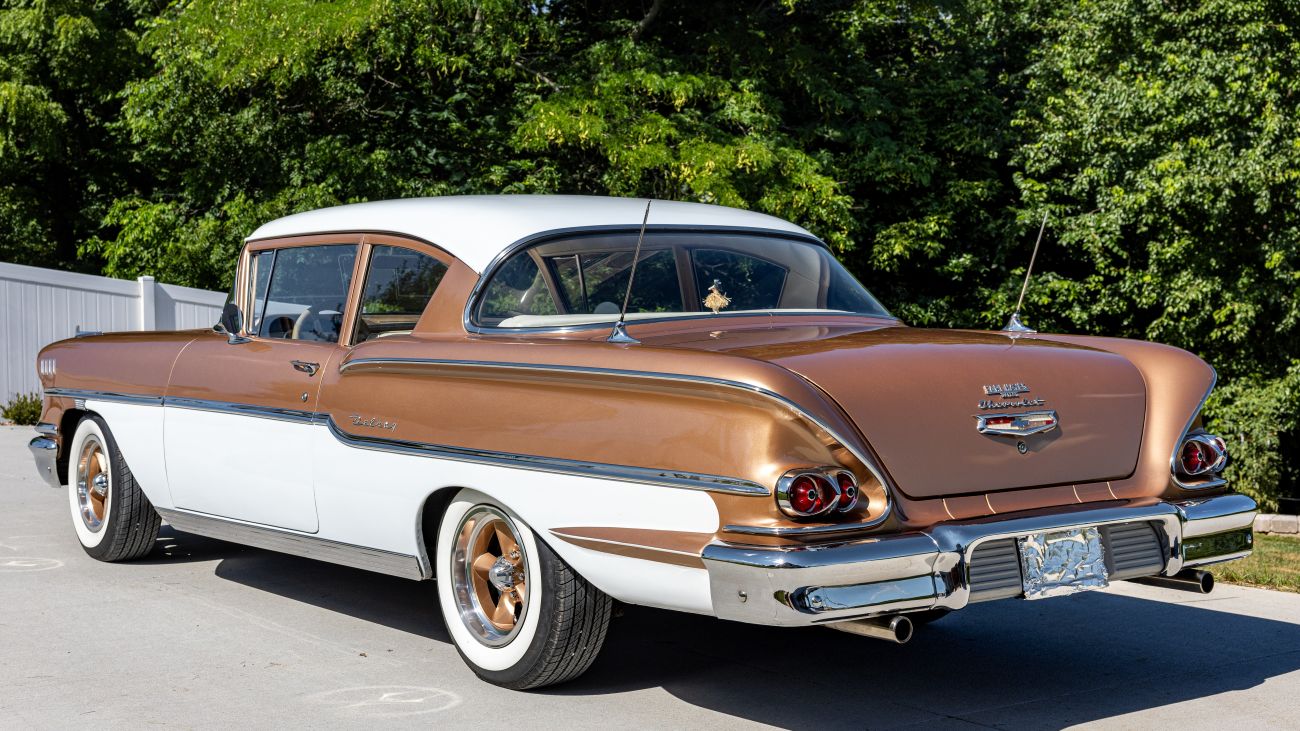
The Anniversary Gold and White two-tone paint scheme is complemented by tasteful use of chrome. Other exterior features include a wraparound windshield and backlite, dual chrome side mirrors, rocker panel trim, Blue Dot lenses, and twin exhaust pipes poking out from under the bumper. A set of gold-painted US Mags wheels is wrapped in 215/70 whitewall Diamond radials.
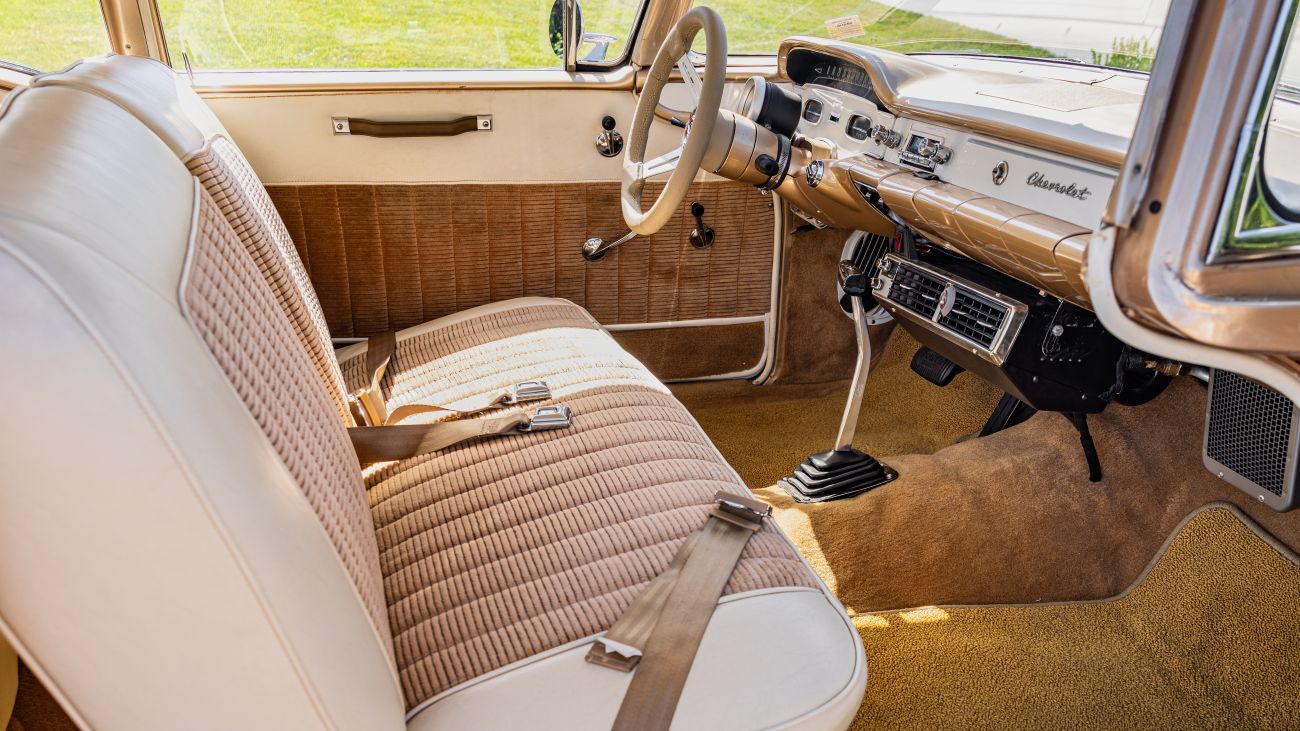
The white and tan vinyl and cloth interior features a split bench seat up front. Interior features include under-dash air conditioning, power steering with three-spoke steering wheel, floor-mounted B&M automatic shifter, clock, and Bluetooth-compatible AM/FM retro-look stereo.
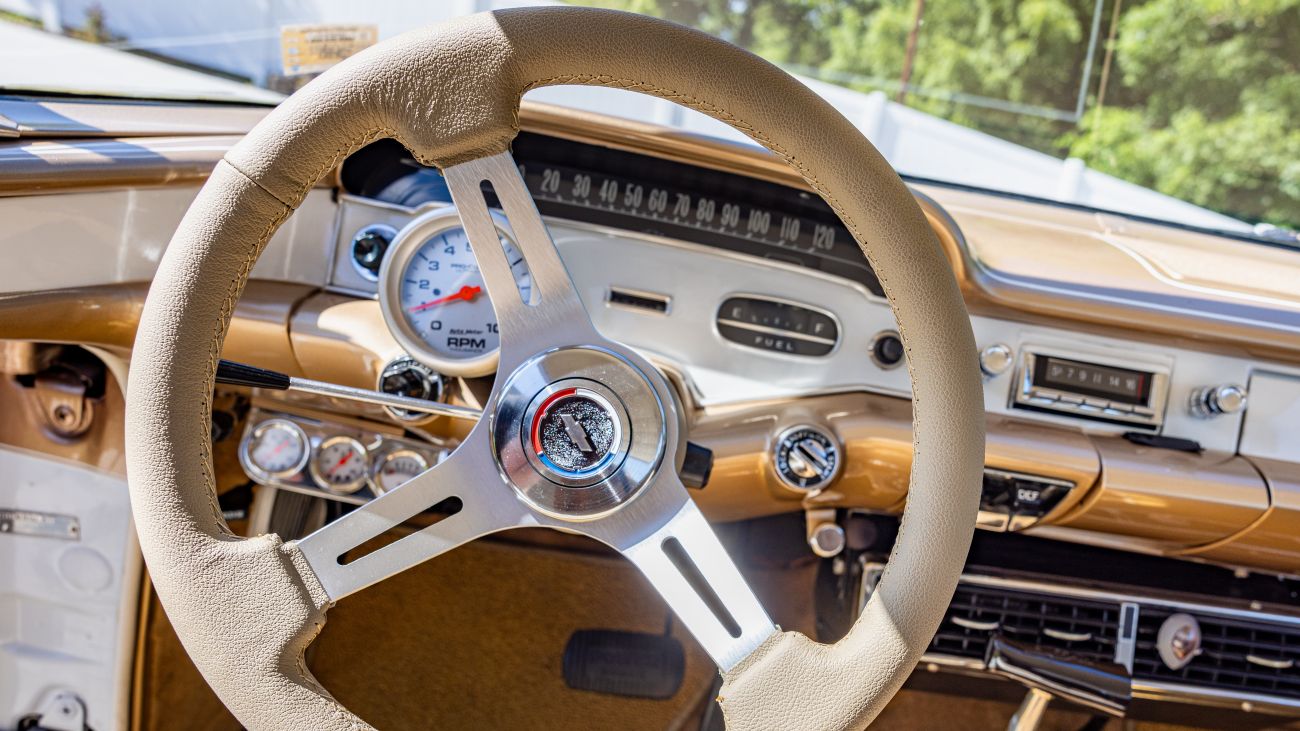
The instrument panel features a 120-mph speedometer and gauges for the temperature and fuel. Additional gauges include a column-mounted 10,000-rpm tachometer and a Sunpro cluster that includes oil pressure, temperature, and voltage. The odometer shows 37,461 miles but the title reads mileage-exempt.
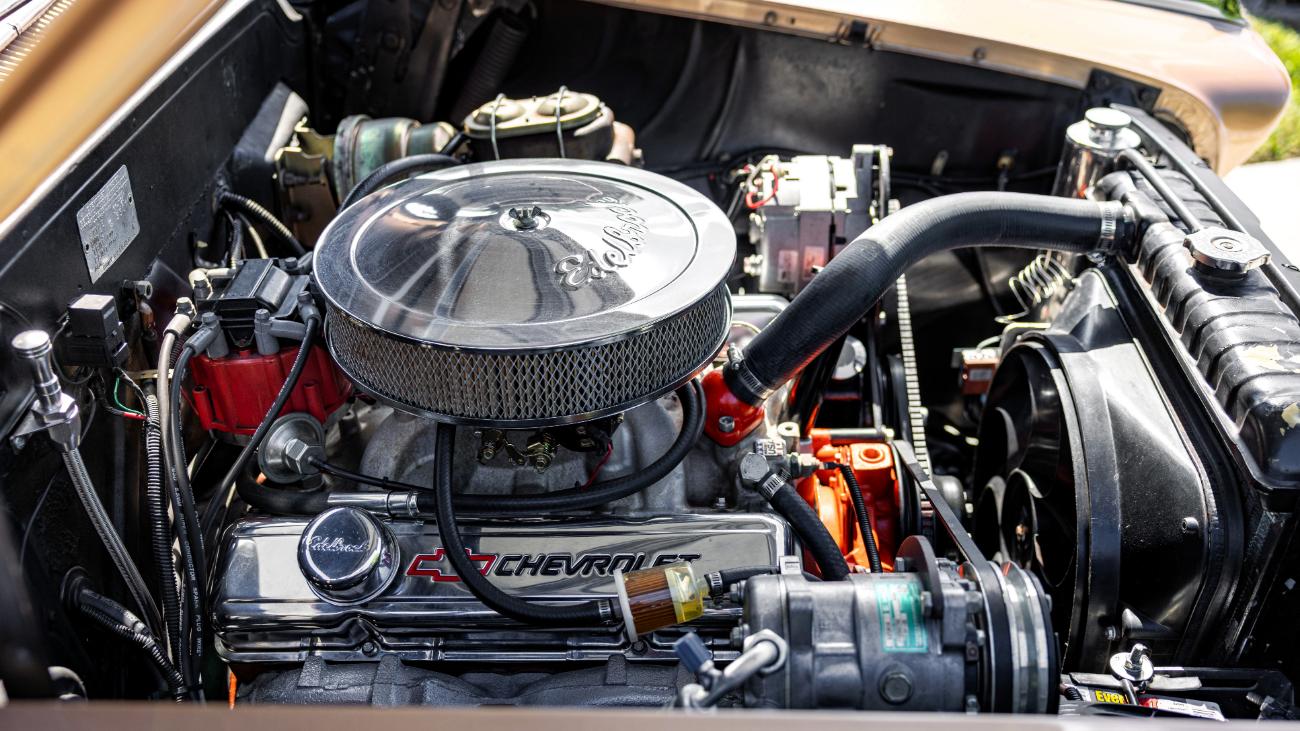
The engine currently residing under the hood is a 327 V8 topped by a four-barrel carburetor and Edelbrock air cleaner. It is backed by a four-speed 700R4 transmission with overdrive, which was rebuilt 10 months ago. The undercarriage features power front disc brakes and a dual exhaust system.
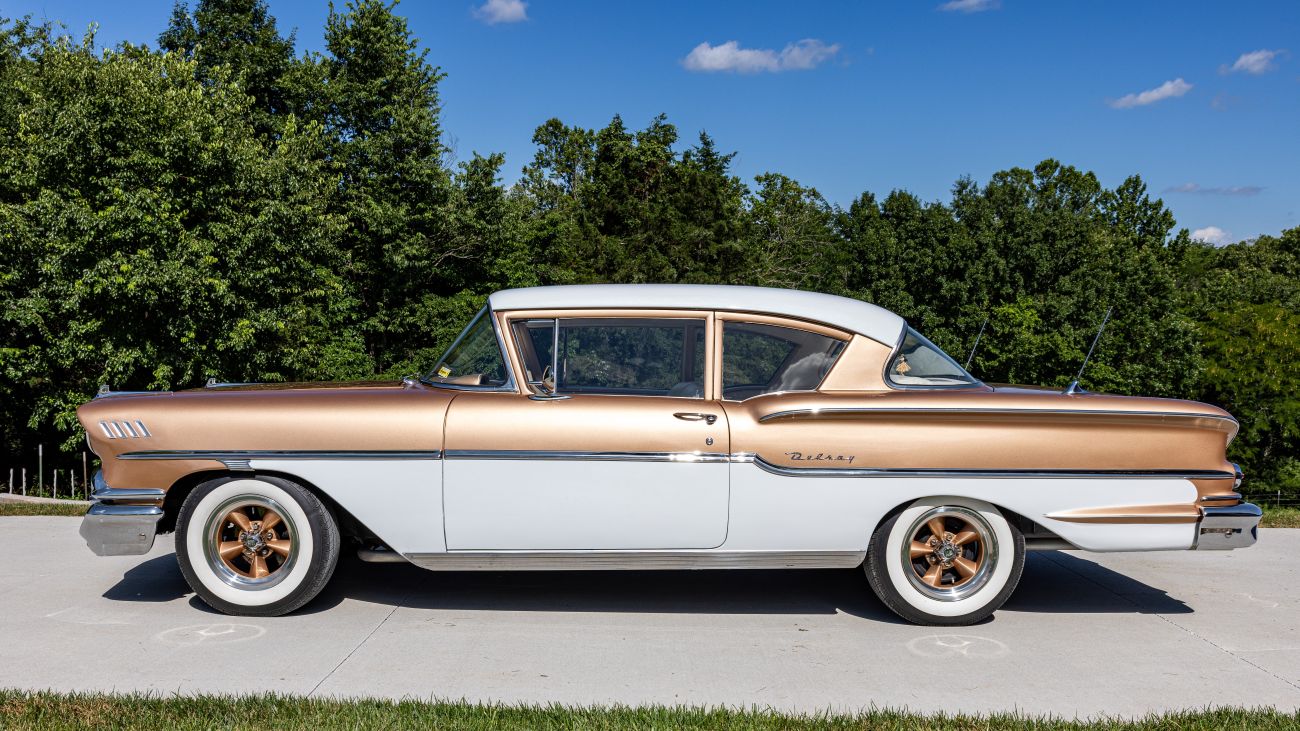
There’s plenty of vintage appeal with this classic Chevy. The paint scheme looks great, the presentation allows me to channel myself back to the mid-1960s, and the small-block V8 will always put out (and you can easily make it put out more). All that’s missing is your name on the title, so bid high and bid soon because the AutoHunter auction for this 1958 Chevrolet Delray two-door sedan ends on Wednesday, July 23, 2025, at 11:45 a.m. (PDT).
Visit the AutoHunter listing for more information and a photo gallery
When it comes to modern trucks, some of the things that get the most attention are the stats, such as the size of their infotainment screens or how much torque they have and how many tons they can pull. But things can be much simpler with vintage pickups: you don’t think about how many camera angles they provide while you’re towing—you can just appreciate them simply for their design. Our Pick of the Day, a 1967 Ford F-100 4X4, has great lines, plus plenty more to love. You can find it on ClassicCars.com listed by a dealer in Manhattan Beach, California.
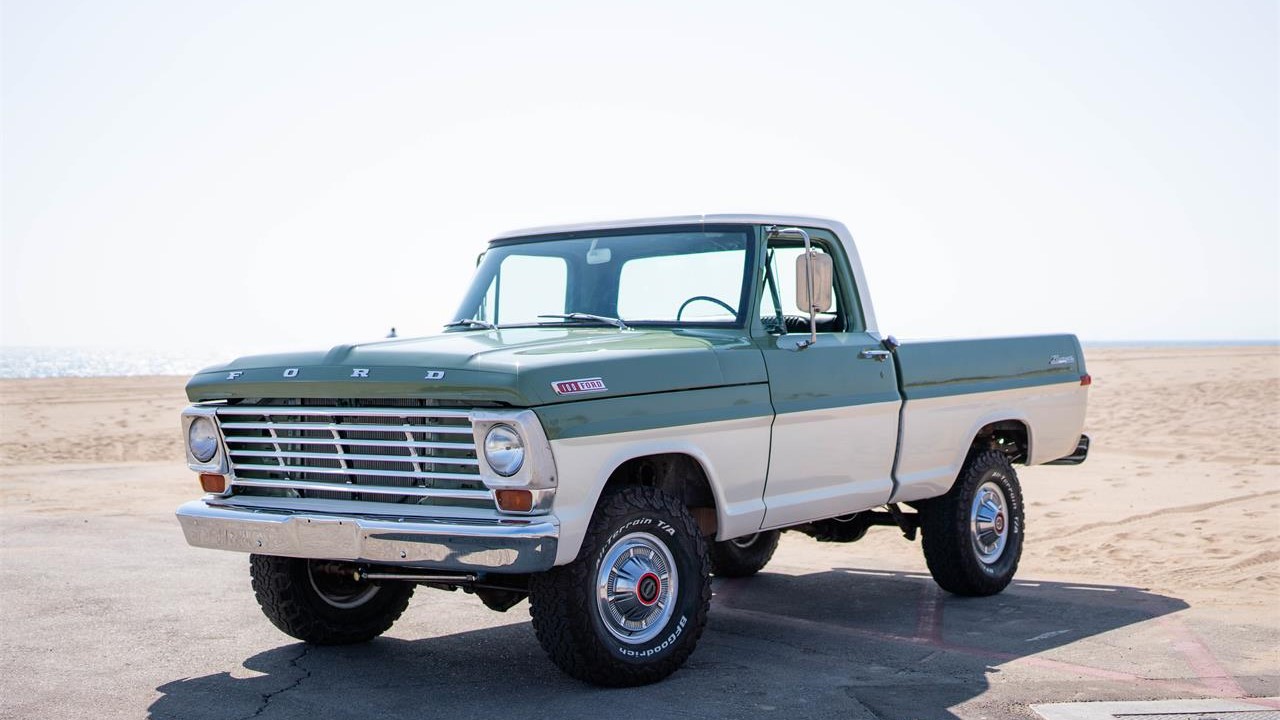
The 1967 model year marked the introduction of the fifth-generation Ford F-Series line of trucks. Exterior updates included moving the FORD lettering to the hood, simplifying the grille, and relocating the parking lights under the headlamps.
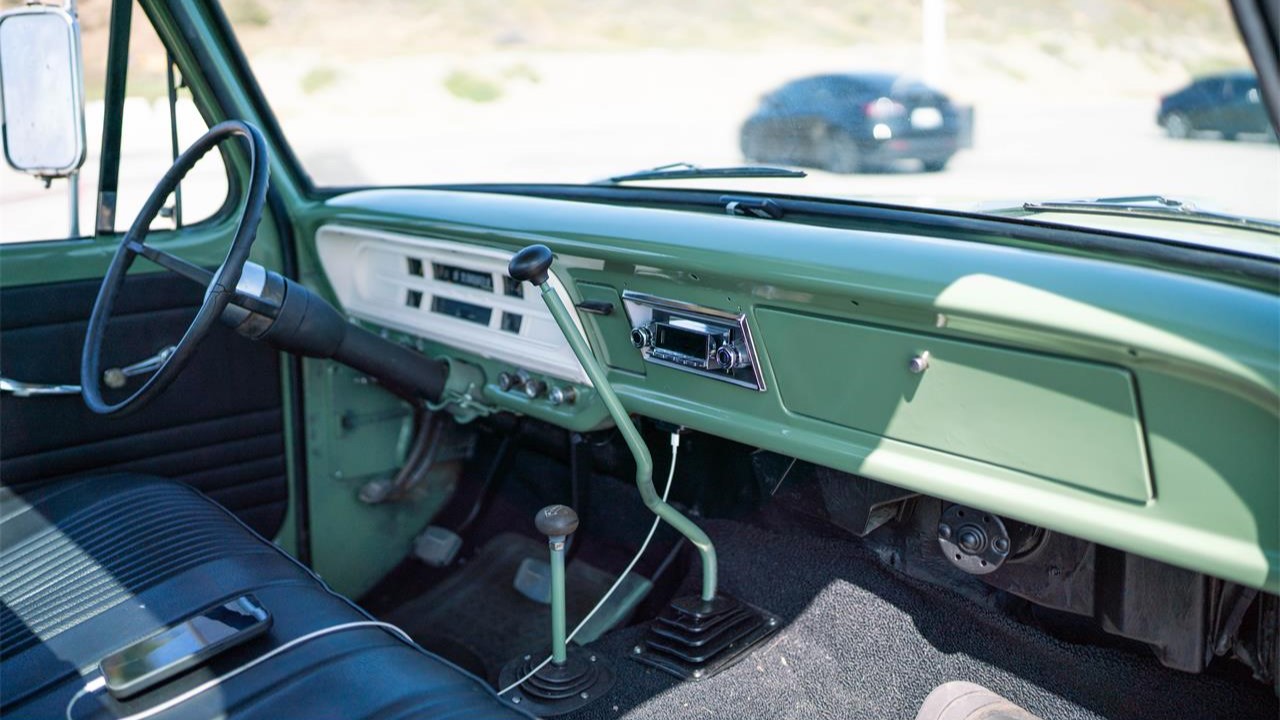
Inside, 1967 four-wheel-drive F-100 and F-250 trucks received a wider instrument cluster, redesigned instrument panel, padded dash, three-inch-wider seat, and body-color trim, all of which made their cabins “attractive, roomier and more carlike in appearance than ever!”
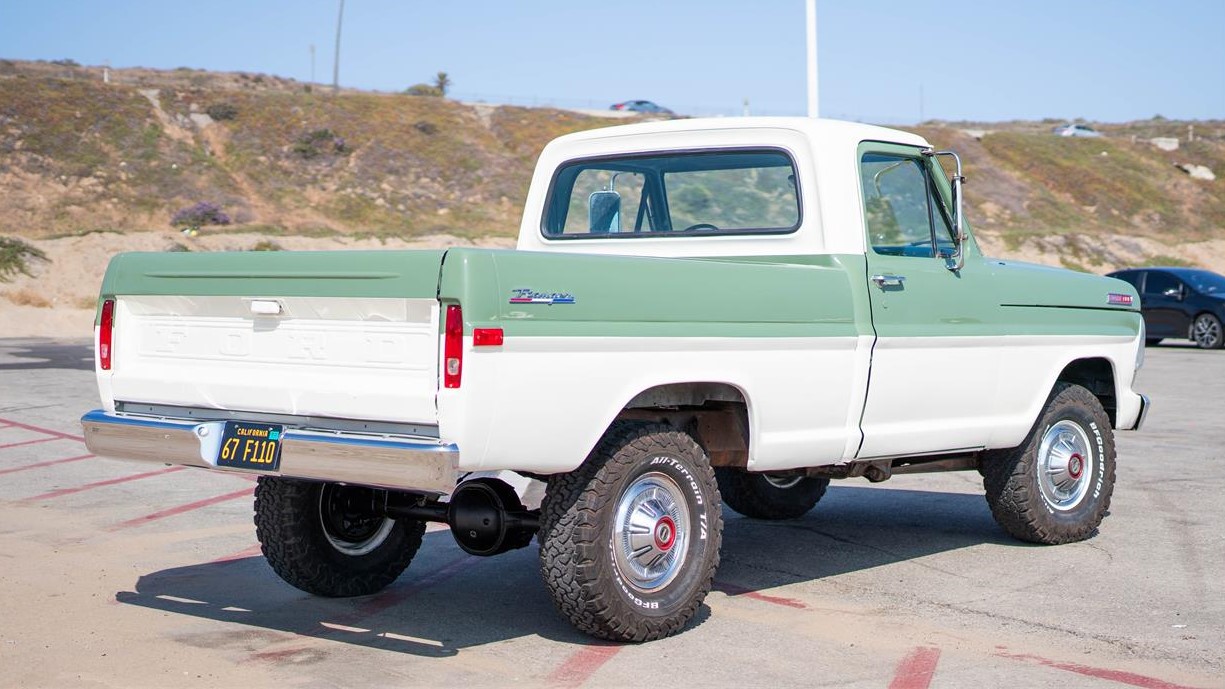
“Carlike” comfort is great and all, but from the outside, an F-Series should look like a truck. This F-100 certainly does. It doesn’t need a massive lift or giant wheels and tires to do that—just a single cab, a short bed, and all-terrain rubber. A fresh coat of Boxwood Green and Wimbledon White paint, and new bumpers add to its vintage charm.
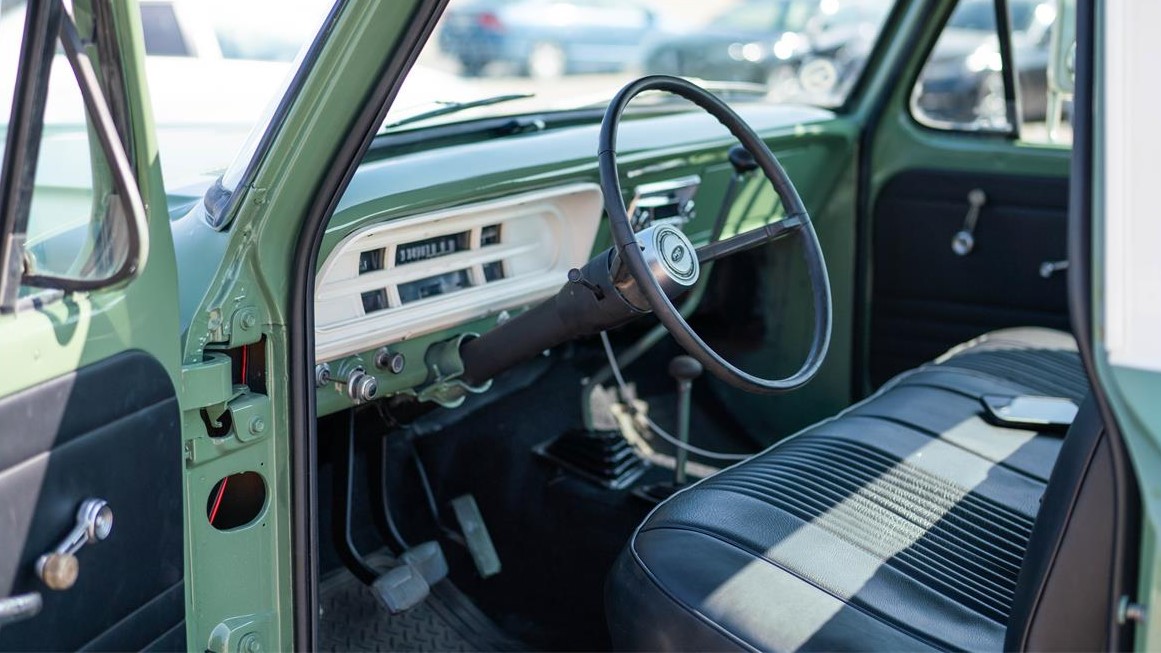
Inside the cabin, the seat belts were upgraded to three-point units, the bench seat was reupholstered in black leather, and the radio was replaced with a RetroSound stereo with Bluetooth, but nothing is jarringly anachronistic.
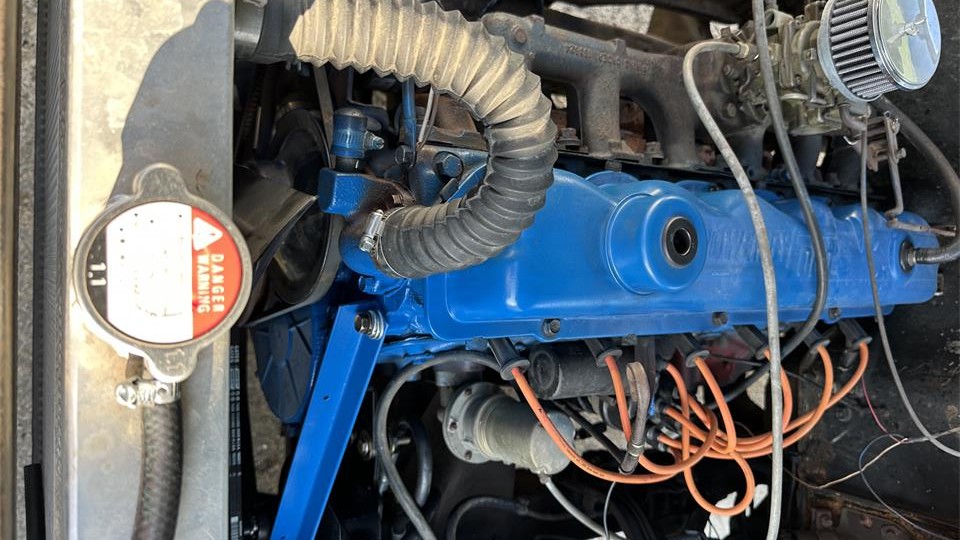
The engine matches the rest of this truck’s tasteful, low-key personality. It hasn’t been swapped out for a Godzilla 7.3-liter gasser; it’s a good old-fashioned 300ci inline-six, which draws fuel from a new gas tank. A four-speed manual gearbox and four-wheel drive help it get this truck down the road and over nature’s obstacles.
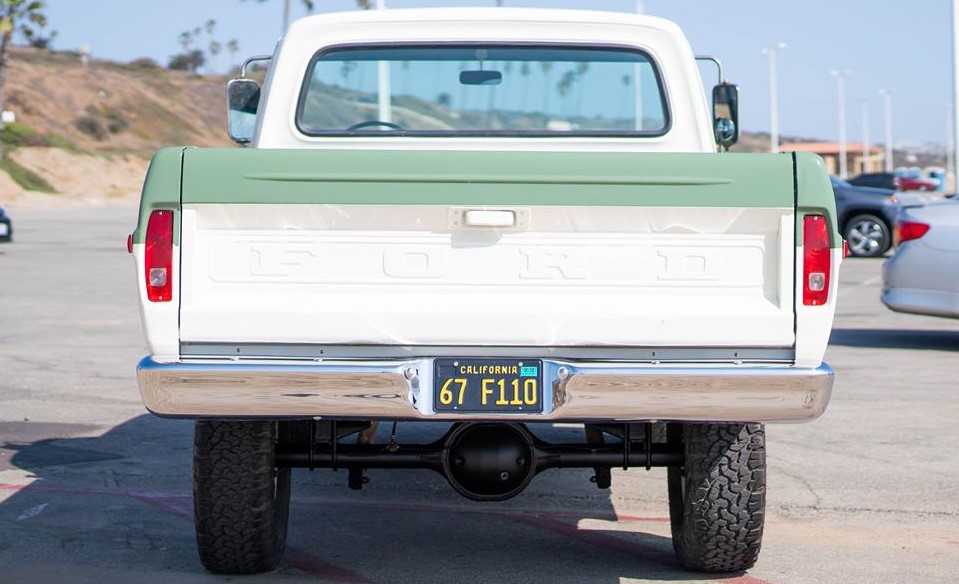
Whether this 1967 Ford F-100 4X4‘s handsome looks or thoughtful updates are the first thing that you notice about it, we have good news: You can buy this truck for $37,999 (OBO) and look at it—or drive it—anytime you want.
Click here to view this Pick of the Day on ClassicCars.com
Sometimes, the most legendary cars are born not from meticulous design, but from unexpected factory blunders and happy accidents. Throughout automotive history, a slip on the assembly line or a quirky engineering oversight has transformed ordinary vehicles into unexpected icons that enthusiasts clamor for. These “mistakes” can enhance performance, create distinctive looks, or introduce funky features that weren’t in the original plan. Over time, these rare quirks often become coveted by collectors and celebrated as unique collector’s items, adding mystique and value to the car’s legacy. In the world of automobiles, sometimes being imperfect is the key to being unforgettable.
Most vehicles are expected to show their age after clocking hundreds of thousands of miles. Yet, some defy expectations by developing a distinct character and visual appeal that only comes with time and use.
Dings, faded paint, and worn interiors can tell stories of adventure and reliability, transforming ordinary cars into cherished legends.
This phenomenon isn’t just about mechanical endurance; it’s about how certain vehicles gain personality and charm as they accumulate miles.
In this article, we explore fifteen remarkable vehicles that looked even better—and earned more admiration—after surpassing 400,000 miles, proving that true automotive beauty is more than skin deep.
Most cars begin to lose value the moment they leave the dealership, succumbing to the relentless force of depreciation. Yet, a select few models have managed to buck this trend, transforming from everyday transportation into coveted collector’s items.
What drives this phenomenon? Rarity, iconic design, racing pedigree, and cultural significance all play their part in turning ordinary cars into blue-chip investments.
Classic car auctions and passionate enthusiasts have propelled prices skyward, sometimes making these vehicles worth many times their original sticker price.
For some, owning such a car is about nostalgia; for others, it’s a savvy financial move.
As we explore these automotive legends, we’ll see why certain models have become more valuable now than ever before.
The recent Pick of the Day on the Alfa Romeo Montreal got me thinking about the cars that it may have influenced. I’ve had it in my mind that 1971 Plymouth Satellite Coupes were inspired by the Montreal. The shapes are somewhat similar, and if you look at a Road Runner with the optional strobe stripes, it does look like John Herlitz and his team gleaned something from Bertone.
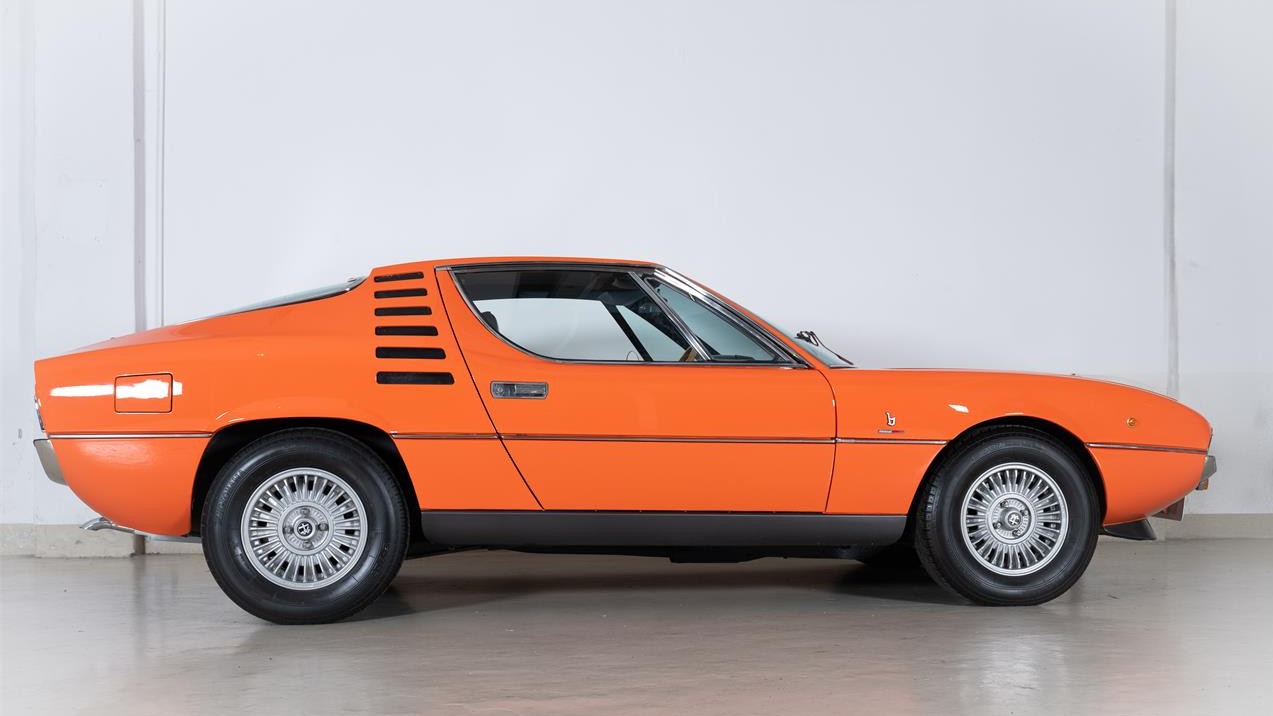
Of course, the symbiotic relationship between Italy and Detroit was not new—in fact, Donald Osborne wrote “Stile Transatlantico” (Transatlantic Style) specifically for the purpose of showing decades of backs and forths between designers on both sides of the Atlantic.
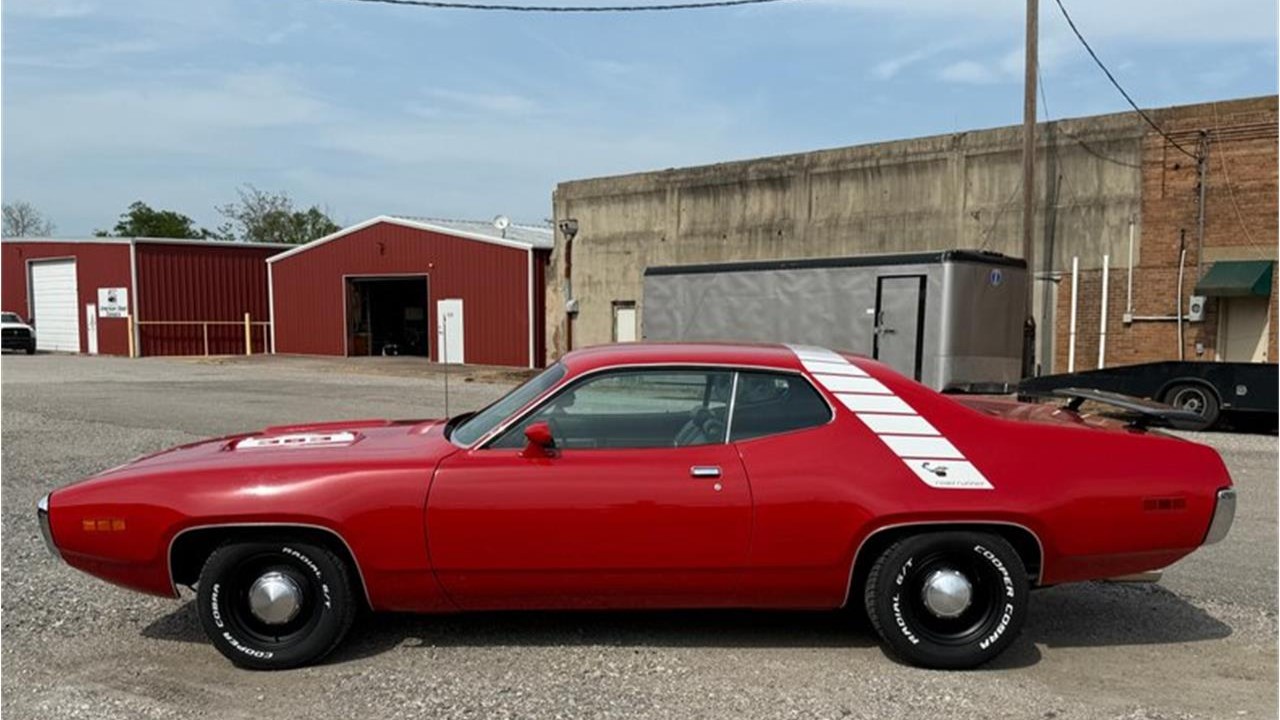
While writing the Pick of the Day, I learned that the Montreal’s C-pillar gills were copped from the Bertone/Giugiaro-designed Alfa Romeo Canguro. This Alfa Romeo TZ-based show car first appeared at the 1964 Paris Motor Show as part of a competition spurred by Alfa to see whether Bertone or Pininfarina could prepare a better design for a road-going version of the TZ. Notable were a stack of front fender vents to allow the engine to cool.
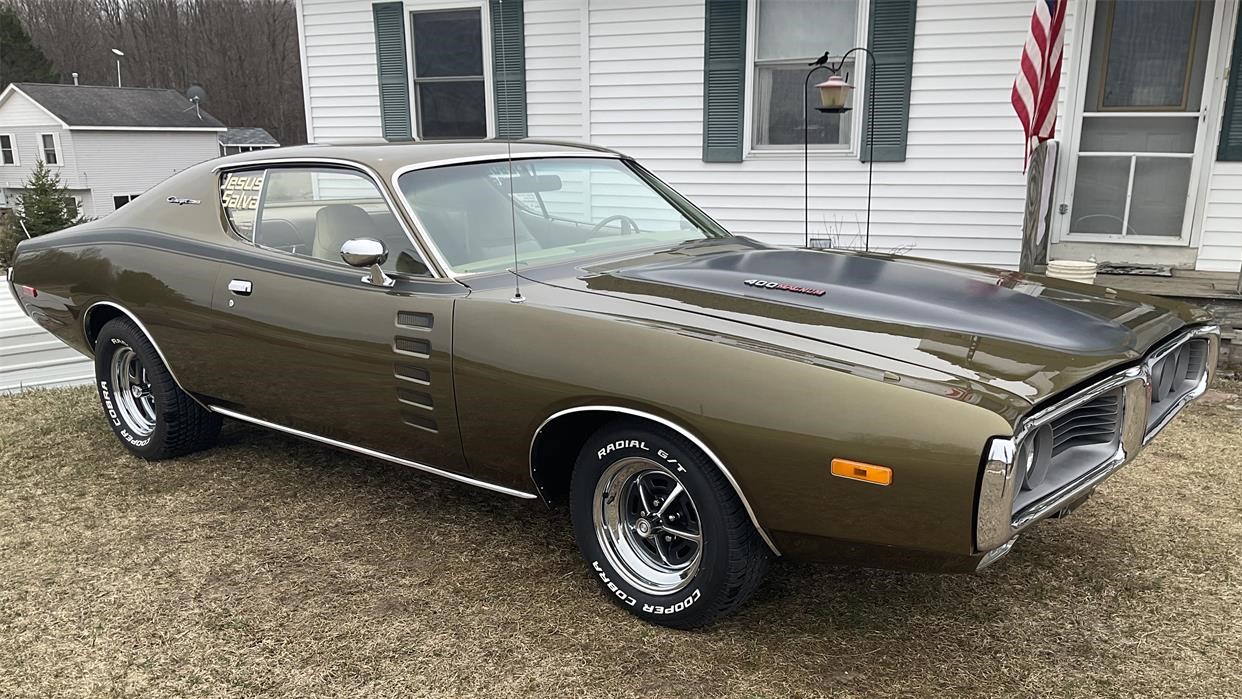
As you may have noticed, the Montreal (and the concept car that preceded it) adopted a similar motif, but along the C-pillar. It is said that this design was used to imply the vehicle was mid-engined even though the engine was mounted in the front. Upon seeing the Canguro, my mind immediately went to the 1972 Dodge Charger Rallye, which featured doors that mimicked this design.
So, it’s quite possible that the Canguro influenced the Alfa Romeo Montreal, 1971-72 Plymouth Road Runner, and 1972 Dodge Charger Rallye. I don’t have proof—just circumstantial evidence. What say you?
When I do research for articles, AutoHunter Spotlights, and Pick of the Day pieces for this website, I typically consult the particular vehicle’s window sticker, brochures, and press kits for specifications and information. Another resource full of helpful facts—about General Motors vehicles—is the GM Heritage site.
GM Heritage tells you the story of company founder William Durant and how he built the American automotive giant. Various short summaries highlight key moments in GM’s first 100 years, such as when Durant regained control after a six-year absence, the founding of the Milford Proving Ground in 1924, and the debut of the Buick Y-Job, “the first step in the evolution and popularization of concept cars within the automotive industry.”
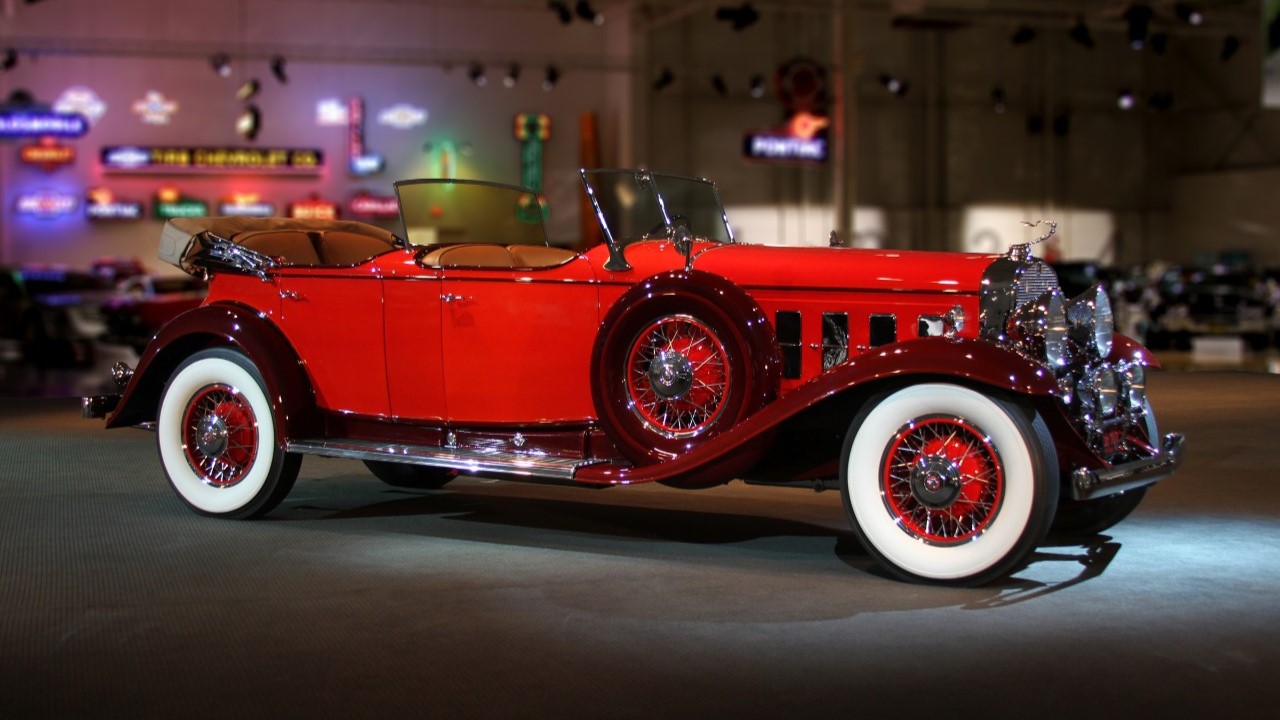
There’s also a section devoted to some of the notable Chevrolet cars and trucks, Oldsmobile, Buick, Cadillac, GMC, Pontiac, and concept vehicles in the GM Heritage Collection. Those include a ’31 Cadillac V-16, ’63 Corvette Stingray, and ’70 Buick GSX. Each one has its own short write-up and small gallery of pictures.
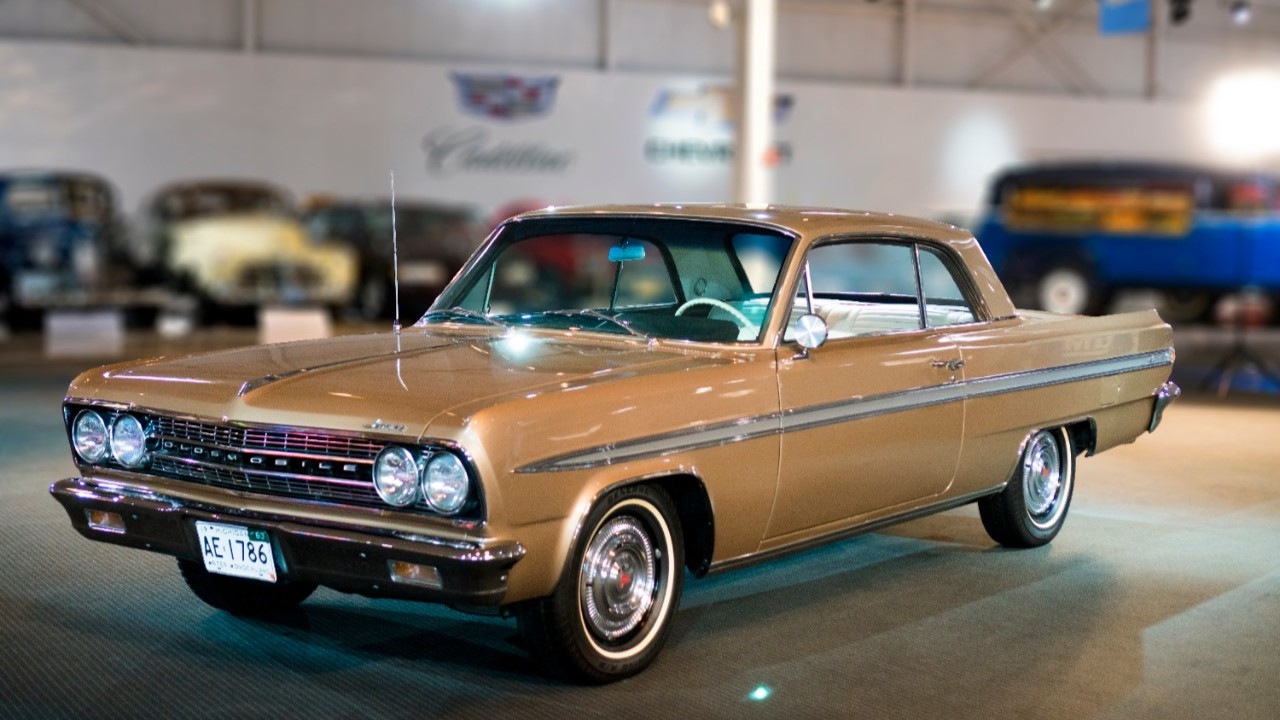
What I’ve found the most useful on a few occasions is the GM Heritage Archive, which holds “more than 250,000 unique historical documents consisting primarily of product catalogs, sales brochures, press materials, promotional records, engineering information and service information.” Although its 900-plus Vehicle Information Kits don’t cover Pontiac, Buick, and GMC, they contain detailed technical and marketing information for many Chevrolet, Cadillac, Oldsmobile, and even Geo vehicles (how that brand made the cut and Pontiac didn’t, who knows?).
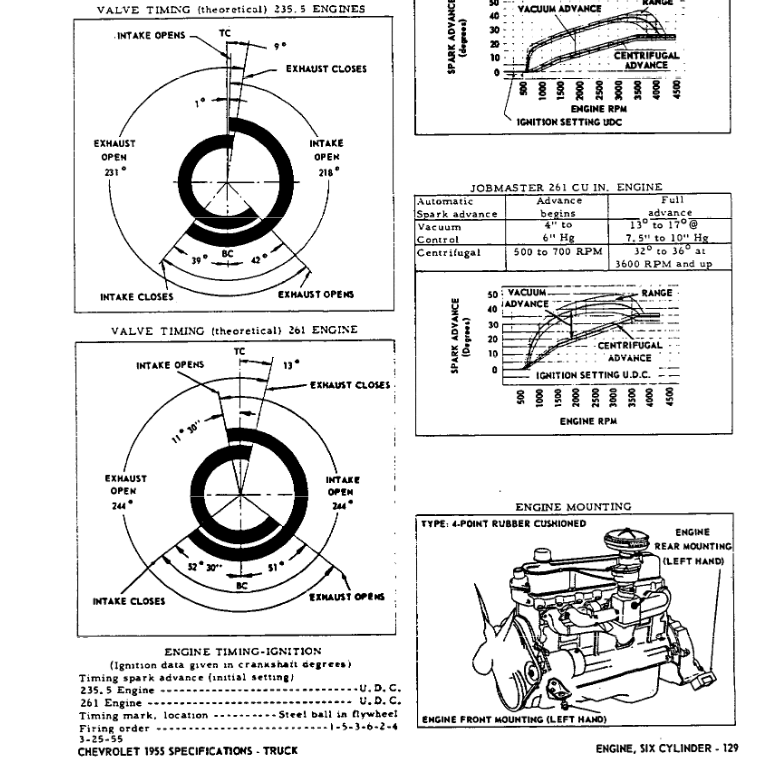
Want to know the valve timing of the 1955 Chevy Second Series trucks’ 235.5ci I6 engine? The info kit has a diagram of it. If you want to read the press release about the ’57 Cadillac Eldorado Brougham, you can. Need to brush up on your 1970 Oldsmobile option codes? Click here!
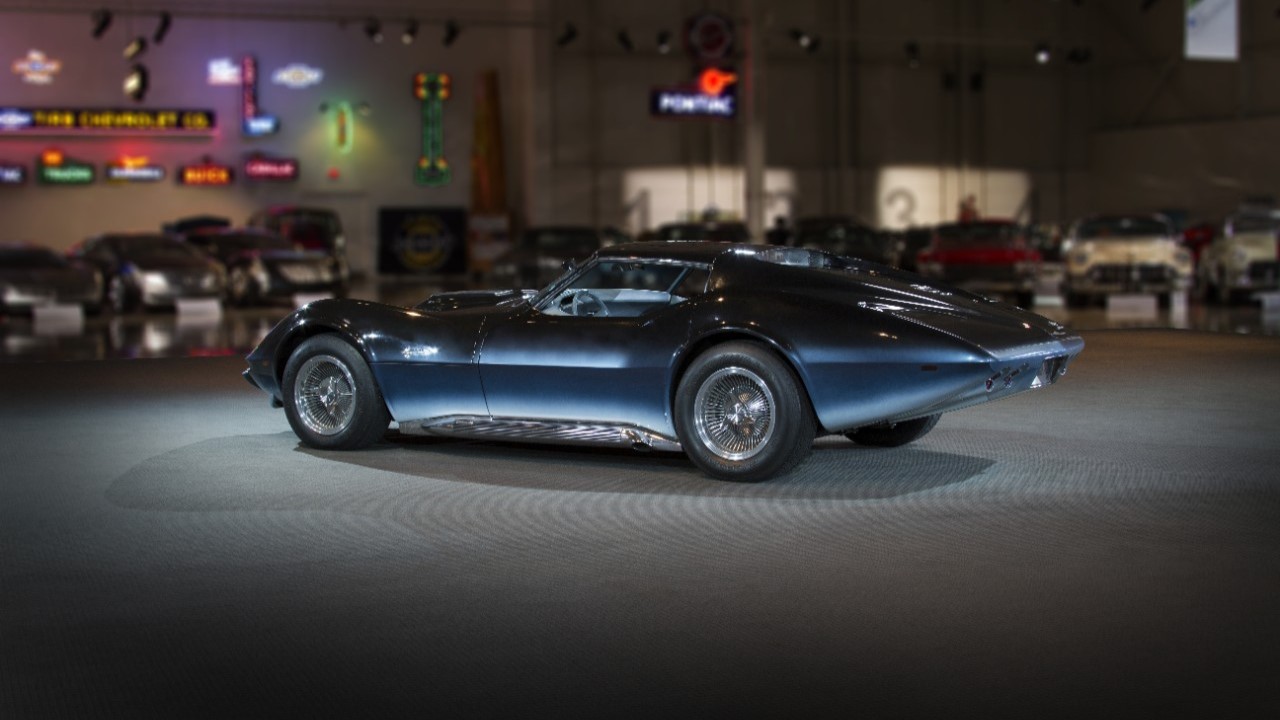
Those are just tiny bits of the information you can find on the GM Heritage site, which you could spend days exploring, stuffing your brain with useful facts and figures from General Motors’ long history. I know I’ve learned a lot from it. I look forward to learning even more and sharing some of that knowledge with you.
